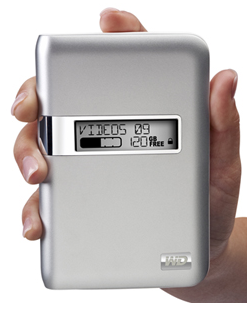Tablets, price discipline may whack hard drive makers

Hard drive makers Seagate and Western Digital have painted a mixed view of demand. The consumer demand is weak and there are a few signs that tablets such as the iPad are hurting demand for drives. For now, these drive giants are maintaining disciplined pricing, but historically that doesn't last long.

- Seagate on Wednesday reported earnings of 33 cents a share on revenue of $2.72 billion. That was in line with Thomson Reuters estimates, but revenue was lighter than expectations. Seagate also said the total addressable market for dries was 155 million to 165 million units in the third quarter.
- On Tuesday, Western Digital said there are 6 million to 8 million excess units in the PC manufacturing pipeline. Western Digital said the total addressable market would about 155 million units down from 168 million in the December quarter. Typically, excess supply leads to falling drive prices. Western Digital reported better-than-expected earnings of 96 cents a share on revenue of $2.47 billion.
- Steve Luczo, Seagate CEO, said the company saw demand drop off the last two weeks of December and cut shipments to keep prices on target.
- Western Digital CEO John Coyne said on his company's earnings conference call that the company plans to grow by focusing on the connected digital home, software that syncs storage and moving into the gaming and enterprise markets. Coyne summed up the calendar year like this:
It was also a year of significant missed opportunity as the industry's supply/demand dynamic deteriorated as the year progressed, resulting in sharply declining ASPs with the final quarter demonstrating a year-over-year decline in industry revenue of 7% on a unit increase of 4%, and an even sharper decline in profitability.
Luczo said:
Long term, we believe tablets and other mobile devices like smartphones are having -- are and have been net positives for the hard drive industry. During the last 30 years, whenever new devices are introduced that consume or create a great deal of rich data, like video, it has been a positive for the storage industry.
In this case, smartphones and tablets need to stream data, and a significant portion of that data will be consumer-generated content, mostly video. Therefore, as these new devices consume significant amount of data and content, users will expect the same experience that they have grown accustomed to with other consumption devices. It seems clear that in order to deliver that overall experience, the most affordable and proven solution is the utilization of disk drives as a caching device throughout the network. Whether the storage is in a NAS box, in your home, in the cloud, or in a local cloud, Seagate provides products for all those markets.
The wild card is how fast consumers will migrate from a Seagate drive that's included in a laptop to buying their own local cloud storage. There's a good reason that Seagate and Western Digital are focused on new areas. If tablets cannibalize notebooks, both of these storage players could take a hit.
Christian Schwab, an analyst at Craig-Hallum Capital, downgraded both Seagate and Western Digital. He said desktop PC units are down despite a strong corporate refresh cycle due to Windows 7. Meanwhile, tablets are a long-term threat. In any case, the hard drive industry looks like it's about to hit some turbulence.